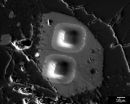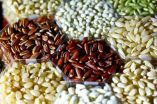(Press-News.org) Spanish researchers have demonstrated that the relationship between marathon running times and the age of the athlete is U-shaped. The work shows the unusual fact that it takes an 18-year-old athlete the same amount of time to finish a marathon as a 55- or 60-year-old runner.
The 42,195 metres that are nowadays known as the marathon were run for the first time at the London Olympic Games of 1908. Since then, many athletes have completed this race and there has also been numerous scientific studies conducted on endurance runners.
Up to now, the majority of these works came to the conclusion that performance in long-distance races decreases progressively from the age of 25 onwards. Now, a study by the Camilo José Cela University in Madrid has found that the relationship between the amount of time a race takes and the runner's age is not increasing and linear throughout adulthood, but rather forms a U graph.
In order to conduct this study, the scientists created a database with the times of more than 45,000 runners who took part in the New York marathon in 2010 and 2011.
"This information included the top ten runners in both the male and female categories between the ages of 18 and 75," Juan Del Coso Garrigós, scientist from the Madrid university and main author of the study, explained to SINC.
The results, published in the journal 'Age', demonstrated that in men, the best times were achieved at 27 years old, while the age for the best running performance in women was 29.
Before this age, athletes' marathon times were 4% slower for every year under this age in both men and women. Afterwards, athletes increased their race times at a rate of 2% per year in both sexes.
"While the rate at which performance drops is moderate until the age of 55, from then on the drop becomes sharper in both male and female runners," Del Coso stated.
An unusual U
This relationship between physical performance in a marathon and age reveals the unusual fact that it takes an 18-year-old athlete a similar amount of time to finish a marathon as a 55- or 60-year-old runner.
Lastly, the study found a certain contrast between the sexes. "The difference in the amount of time it takes men and women to finish a marathon remains at approximately 20% until 55 years of age. But from this age onwards the differences between the sexes are greater and reach more than 40% at 70 years old," the expert concluded.
INFORMATION:
Reference:
Beatriz Lara & Juan José Salinero & Juan Del Coso. "The relationship between age and running time in elite marathoners is U-shaped". AGE (2014) 36:1003 DOI 10.1007/s11357-013-9614-z
Contact:
Juan Del Coso Garrigós
Universidad Camilo José Cela
Tel. 91 815 31 31. Ext. 1627
Email: jdelcoso@ucjc.edu
Marathon runners' times develop in a U shape
Men recorded their best time at 27 years old while women did so at 29
2014-05-28
ELSE PRESS RELEASES FROM THIS DATE:
International research group documents unique songbird diversity of the Eastern Himalayas
2014-05-28
The Eastern Himalayas are home to more than 360 different songbird species, most of which are to be found nowhere else on the planet. This makes the region extending from eastern Nepal to the borderlands of China, India, and Myanmar unique and one of the most important hot spots for biological diversity in the western hemisphere. A recent research paper describes how this impressive bird community came about millions of years ago, emphasizing both the uniqueness and biological significance of this remote area. "As the Himalayan mountain range was formed, a profusion of ...
Sneaky bacteria change key protein's shape to escape detection
2014-05-28
Every once in a while in the U.S., bacterial meningitis seems to crop up out of nowhere, claiming a young life. Part of the disease's danger is the ability of the bacteria to evade the body's immune system, but scientists are now figuring out how the pathogen hides in plain sight. Their findings, which could help defeat these bacteria and others like it, appear in the Journal of the American Chemical Society.
Linda Columbus and colleagues explain that the bacteria Neisseria meningitidis, one cause of meningitis, and its cousin Neisseria gonorrhoeae, which is responsible ...
Artificial lung the size of a sugar cube
2014-05-28
This news release is available in German.
Lung cancer is a serious condition. Once patients are diagnosed with it, chemotherapy is often their only hope. But nobody can accurately predict whether or not this treatment will help. To start with, not all patients respond to a course of chemotherapy in exactly the same way. And then there's the fact that the systems drug companies use to test new medications leave a lot to be desired. "Animal models may be the best we have at the moment, but all the same, 75 percent of the drugs deemed beneficial when tested on animals ...
Water in moon rocks provides clues and questions about lunar history
2014-05-28
A recent review of hundreds of chemical analyses of Moon rocks indicates that the amount of water in the Moon's interior varies regionally – revealing clues about how water originated and was redistributed in the Moon. These discoveries provide a new tool to unravel the processes involved in the formation of the Moon, how the lunar crust cooled, and its impact history.
This is not liquid water, but water trapped in volcanic glasses or chemically bound in mineral grains inside lunar rocks. Rocks originating from some areas in the lunar interior contain much more water ...
Ultraviolet cleaning reduces hospital superbugs by 20 percent: Study
2014-05-28
Washington, DC, May 27, 2014 – Healthcare-associated vancomycin-resistant enterococcus (VRE), methicillin-resistant Staphylococcus aureus (MRSA), Clostridium difficile (CD), and other multidrug-resistant organisms (MDRO) were decreased among patients after adding ultraviolet environmental disinfection (UVD) to the cleaning regimen, according to a study published in the June issue of the American Journal of Infection Control, the official publication of the Association for Professionals in Infection Control and Epidemiology (APIC).
In this retrospective study led by the ...
What can plants reveal about gene flow? That it's an important evolutionary force
2014-05-28
A plant breeder discovers his experimental crops have been "contaminated" with genes from a neighboring field. New nasty weeds sometimes evolve directly from natural crosses between domesticated species and their wild relatives. A rare plant is threatened due to its small population size and restricted range. What do all these situations have in common? They illustrate the important role of gene flow among populations and its potential consequences. Although gene flow was recognized by a few scientists as a significant evolutionary force as early as the 1940s, its relative ...
In Africa, STI testing could boost HIV prevention
2014-05-28
PROVIDENCE, R.I. [Brown University] — To maximize HIV prevention efforts in South Africa and perhaps the broader region, public health officials should consider testing for other sexually transmitted infections when they test for HIV, according to a new paper in the journal Sexually Transmitted Infections.
STIs can make HIV easier to transmit even after antiretroviral therapy has begun, so rooting out STI co-infections in patients should improve HIV prevention. The new study led by Brown University public health researchers emphasizes that sooner is indeed better than ...
Variety in diet can hamper microbial diversity in the gut
2014-05-28
AUSTIN, Texas — Scientists from The University of Texas at Austin and five other institutions have discovered that the more diverse the diet of a fish, the less diverse are the microbes living in its gut. If the effect is confirmed in humans, it could mean that the combinations of foods people eat can influence the diversity of their gut microbes.
The research could have implications for how probiotics and diet are used to treat diseases associated with the bacteria in human digestive systems.
A large body of research has shown that the human microbiome, the collection ...
Melting Arctic opens new passages for invasive species
2014-05-28
For the first time in roughly 2 million years, melting Arctic sea ice is connecting the north Pacific and north Atlantic oceans. The newly opened passages leave both coasts and Arctic waters vulnerable to a large wave of invasive species, biologists from the Smithsonian Environmental Research Center assert in a commentary published May 28 in Nature Climate Change.
Two new shipping routes have opened in the Arctic: the Northwest Passage through Canada, and the Northern Sea Route, a 3000-mile stretch along the coasts of Russia and Norway connecting the Barents and Bering ...
3,000 rice genome sequences made publicly available on World Hunger Day
2014-05-28
The open-access, open-data journal GigaScience (published by BGI and Biomed Central), announces today the publication of an article on the genome sequencing of 3000 rice strains along with the release of this entire dataset in a citable format in journal's affiliated open-access database, GigaDB. The publication and release of this enormous data set (which quadruples the current amount of publicly available rice sequence data) coincides with World Hunger Day to highlight one of the primary goals of this project— to develop resources that will aid in improving global food ...
LAST 30 PRESS RELEASES:
Study: Teens use cellphones for an hour a day at school
After more than two years of war, Palestinian children are hungry, denied education and “like the living dead”
The untold story of life with Prader-Willi syndrome - according to the siblings who live it
How the parasite that ‘gave up sex’ found more hosts – and why its victory won’t last
When is it time to jump? The boiling frog problem of AI use in physics education
Twitter data reveals partisan divide in understanding why pollen season's getting worse
AI is quick but risky for updating old software
Revolutionizing biosecurity: new multi-omics framework to transform invasive species management
From ancient herb to modern medicine: new review unveils the multi-targeted healing potential of Borago officinalis
Building a global scientific community: Biological Diversity Journal announces dual recruitment of Editorial Board and Youth Editorial Board members
Microbes that break down antibiotics help protect ecosystems under drug pollution
Smart biochar that remembers pollutants offers a new way to clean water and recycle biomass
Rice genes matter more than domestication in shaping plant microbiomes
Ticking time bomb: Some farmers report as many as 70 tick encounters over a 6-month period
Turning garden and crop waste into plastics
Scientists discover ‘platypus galaxies’ in the early universe
Seeing thyroid cancer in a new light: when AI meets label-free imaging in the operating room
Neutrophil-to-lymphocyte ratio may aid risk stratification in depressive disorder
2026 Seismological Society of America Annual Meeting
AI-powered ECG analysis offers promising path for early detection of chronic obstructive pulmonary disease, says Mount Sinai researchers
GIMM uncovers flaws in lab-grown heart cells and paves the way for improved treatments
Cracking the evolutionary code of sleep
Medications could help the aging brain cope with surgery, memory impairment
Back pain linked to worse sleep years later in men over 65, according to study
CDC urges ‘shared decision-making’ on some childhood vaccines; many unclear about what that means
New research finds that an ‘equal treatment’ approach to economic opportunity advertising can backfire
Researchers create shape-shifting, self-navigating microparticles
Science army mobilizes to map US soil microbiome
Researchers develop new tools to turn grain crops into biosensors
Do supervised consumption sites bring increased crime? Study suggests that’s a myth
[Press-News.org] Marathon runners' times develop in a U shapeMen recorded their best time at 27 years old while women did so at 29




